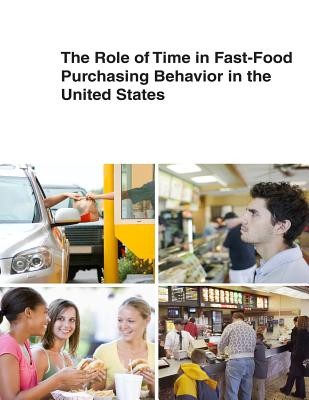
- We will send in 10–14 business days.
- Author: United States Department of Agriculture
- Publisher: CreateSpace Independent Publishing Platform
- Year: 2014
- Pages: 50
- ISBN-10: 1505347513
- ISBN-13: 9781505347517
- Format: 21.6 x 28 x 0.3 cm, softcover
- Language: English
- SAVE -10% with code: EXTRA
The Role of Time in Fast-Food Purchasing Behavior in the United States (e-book) (used book) | bookbook.eu
Reviews
Description
Meals, snacks, and beverages purchased at fast-food restaurants account for an increas-ingly large share of a typical American's food budget and have been blamed for Americans' expanding waistlines and poor diet quality. This study uses data from the 2003-11 American Time Use Survey to examine the effects of time-use behaviors, prices, sociodemographic characteristics, labor force participation, and prices on fast-food purchasing patterns in the United States before and after the Great Recession. Fast-food purchasers spend less time sleeping, doing housework, eating and drinking, and watching television than nonpurchasers, and more time traveling from place to place. They also tend to have higher incomes and higher education levels. While the time that Americans spent eating out at all restaurants declined during and after the 2007-09 recession, the share of the population eating at fast-food restaurants on a given day stayed fairly constant, seemingly unaffected by the economic downturn, but the share for sit-down restaurants declined.
- Author: United States Department of Agriculture
- Publisher: CreateSpace Independent Publishing Platform
- Year: 2014
- Pages: 50
- ISBN-10: 1505347513
- ISBN-13: 9781505347517
- Format: 21.6 x 28 x 0.3 cm, softcover
- Language: English English
Meals, snacks, and beverages purchased at fast-food restaurants account for an increas-ingly large share of a typical American's food budget and have been blamed for Americans' expanding waistlines and poor diet quality. This study uses data from the 2003-11 American Time Use Survey to examine the effects of time-use behaviors, prices, sociodemographic characteristics, labor force participation, and prices on fast-food purchasing patterns in the United States before and after the Great Recession. Fast-food purchasers spend less time sleeping, doing housework, eating and drinking, and watching television than nonpurchasers, and more time traveling from place to place. They also tend to have higher incomes and higher education levels. While the time that Americans spent eating out at all restaurants declined during and after the 2007-09 recession, the share of the population eating at fast-food restaurants on a given day stayed fairly constant, seemingly unaffected by the economic downturn, but the share for sit-down restaurants declined.


Reviews